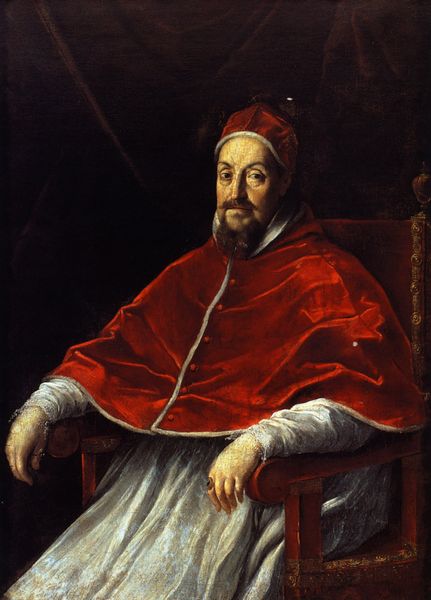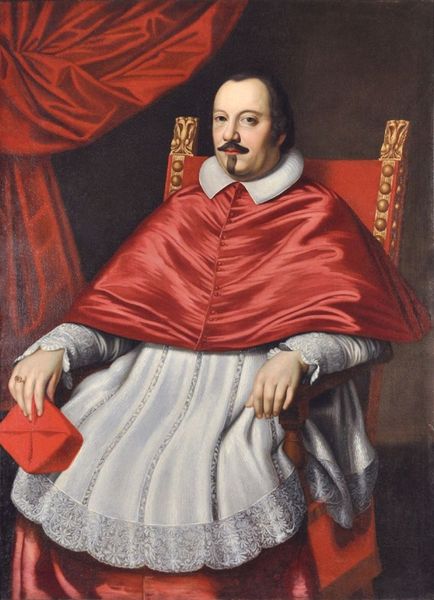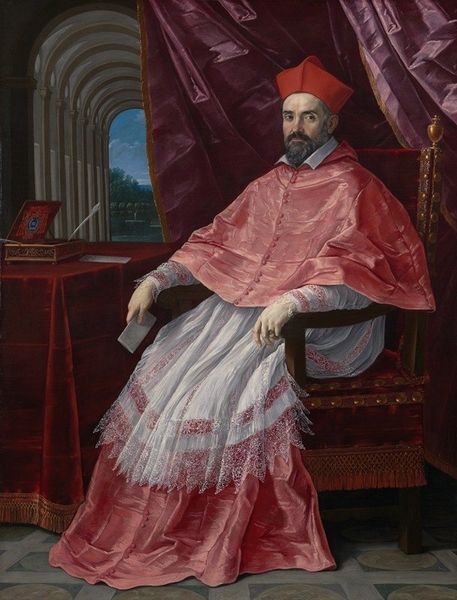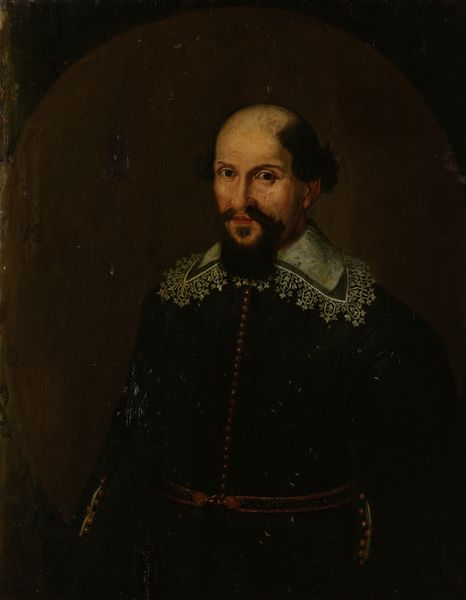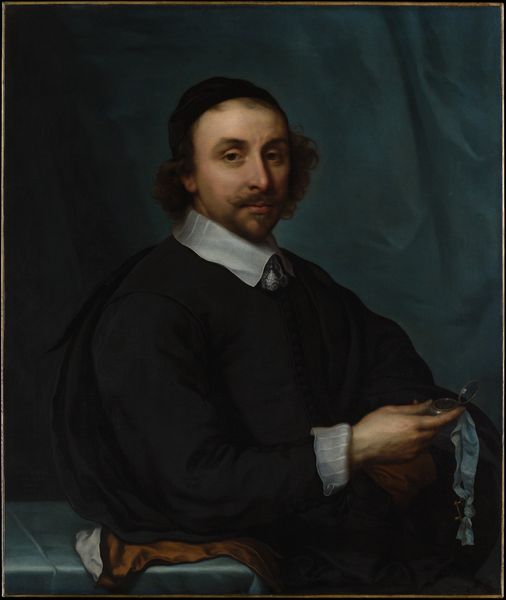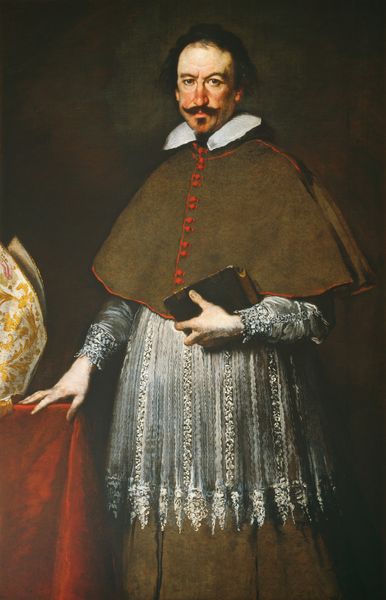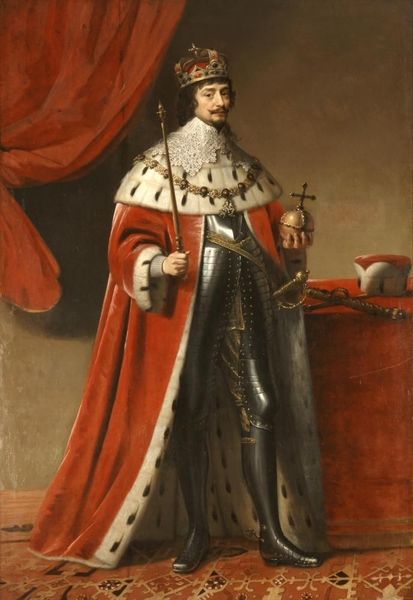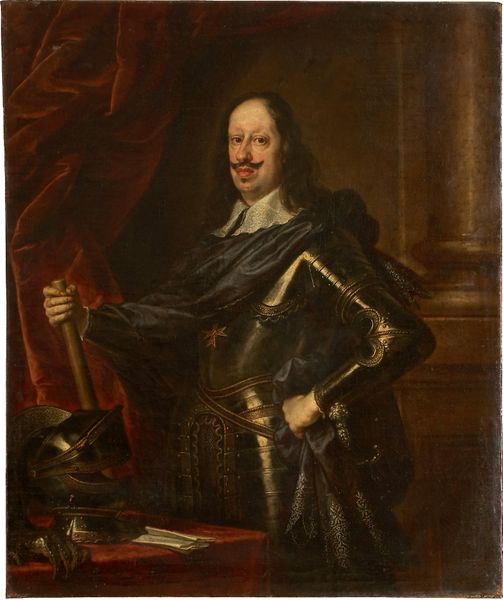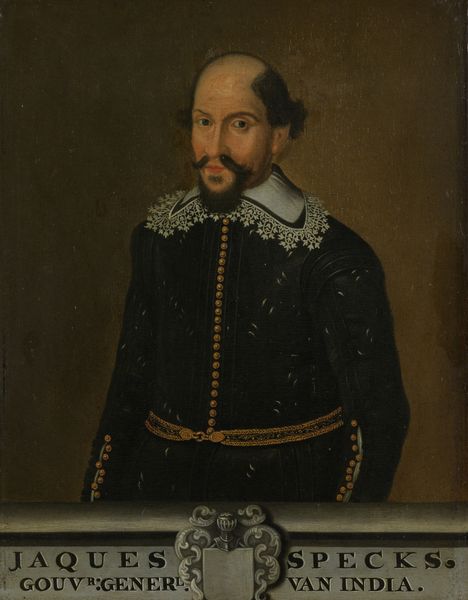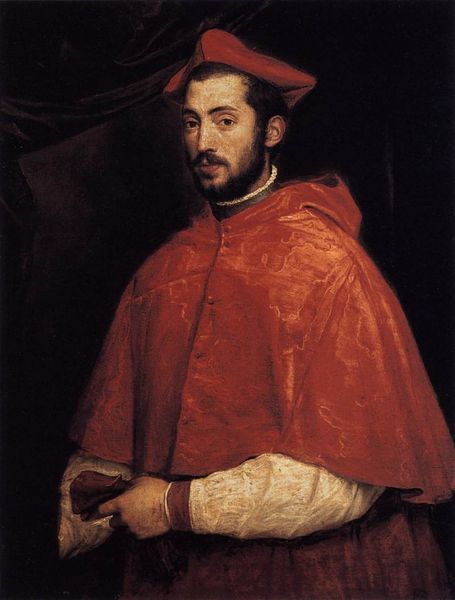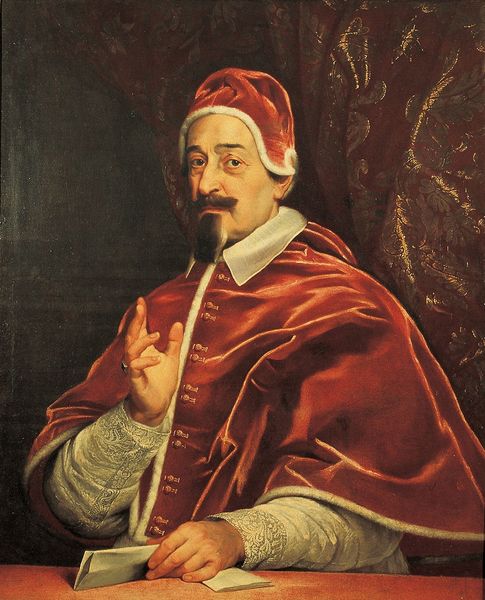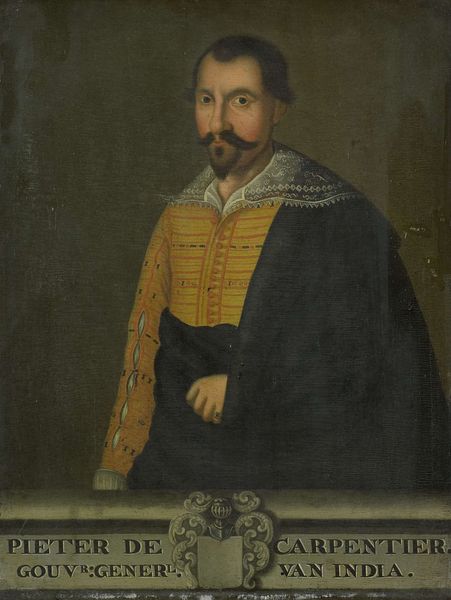
Portrait of Cardinal Pietro Maria Borghese c. late 1620s - early 1630s
0:00
0:00
painting, oil-paint, oil-on-canvas
#
portrait
#
baroque
#
portrait
#
painting
#
oil-paint
#
history-painting
#
oil-on-canvas
Dimensions: 53 x 39 in. (134.62 x 99.06 cm) (canvas)63 1/4 x 49 1/2 x 3 in. (160.66 x 125.73 x 7.62 cm) (outer frame)
Copyright: Public Domain
Editor: We’re looking at Pietro da Cortona’s "Portrait of Cardinal Pietro Maria Borghese," likely painted in the late 1620s or early 1630s. It’s an oil on canvas, and the first thing that strikes me is how grounded and almost serious the Cardinal looks. What draws your eye when you look at this painting? Curator: It's the subtle tension, isn't it? The sumptuous red against that dark background practically vibrates. But there's a weight there too; it makes me wonder, what does a man like that dream about? Is it the burdens of power or is he just hoping his soufflé rises at the next Vatican potluck? Notice, also, the artist avoids sharp lines for the face. Do you think it conveys gentleness? Editor: It definitely softens his features, gives him a more human quality. Though those eyes still hold a certain intensity, like he's judging me. But why Borghese? Curator: He came from serious wealth and power, darlin'. Cortona understood portraiture as theatrical presence. It’s like he's saying, "Remember this name". But that theatricality, if it lacks emotional sincerity, feels as flimsy as the paper he's holding. Do you get that sense? Editor: I think I do. The light catches that paper, which hints at the inner machinations that elevated his kind and left so many behind. There's also a narrative within a single pose. I’d love to know the actual story behind it! Curator: And darling, isn’t that the heart of art – this whisper across time begging us to fill in the silences, the shadows? It gives our experience its meaning, eh? Editor: Exactly! It’s the questions that the painting prompts, more than any answers it offers, that make it so captivating. I learned so much. Thanks.
